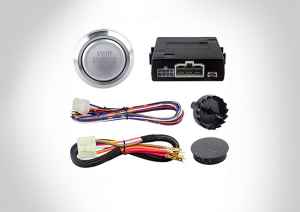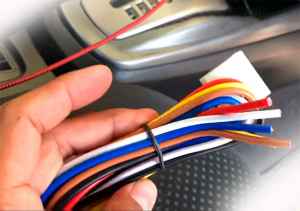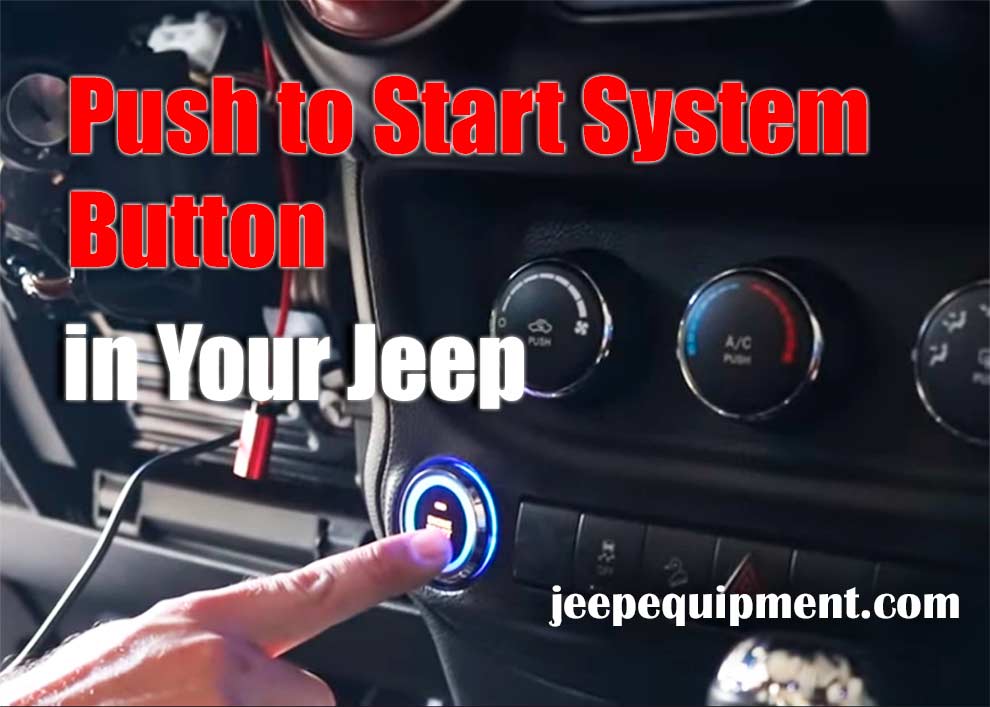The key-ignition system has been around for ages. Introduced back in 1910, it’s still very much dominant. Straightforward, reliable, and affordable, there’s very little not to like about it. However, it’s a bit outdated, and if you lose the key the Jeep won’t start. So, what about the push-button start mechanism? Is it a worthy alternative? How much will it cost you to get one?
Great news: you won’t need pro-grade skills or expensive tools to pull this off. Just follow my lead, and you’ll be done in no time! We’ll begin this How to install push to start system button in Jeep slow. First, we’ll check the current prices on the market. Next, we’ll talk about compatibility, the required equipment, and only then the actual installation. Let’s roll!
How much is this going to Cost You?

The high price is mostly dictated by the material/build quality, compatibility (how many different vehicles it can fit), and the package. Some manufacturers only sell the push-start button, while others include a set of smart keys, a fob, and a module unit. With it, you’ll be able to control the Jeep’s inboard system from afar, heating the engine, setting the right “climate”, and more.
Can you do this to any Jeep?
Another popular question has to do with compatibility. True, premium-quality ignition packs support a wide list of brands and models, but there are no universal systems. You’ll have to look for a kit that was specifically designed for your vehicle. The best thing about Jeeps – you won’t have any trouble with the installation/fitment. The wiring isn’t at all complicated, which is a big pro.
Besides, many modern-day SUVs come with this system pre-installed. So, make sure you’ve got the right fit, and that’s it! You’ll find all the necessary information in the specifications. Having trouble figuring it out? Ask a staff member to lend you a hand. When shopping online, it should be easier, as they always include compatibility charts.
Getting Started

That’s mainly why I decided to write this guide – to explain things in a more “user-friendly” way. The kit should also include a diagram. It will be very helpful to get all the connections right. Don’t have one? No worries – here’s a quick look at a standard schematic. The white wire is for the power-on. Black is responsible for grounding. Yellow is the engine start, while blue is the ACC power wire. Oh, and red is +12V.
What you’ll need for the Job
Most of the necessary stuff will come as part of the push-button kit. I still want you to get the following tools/equipment:
- Soldering iron (you can order it for $40-60)
- A drill (to make holes in the dash)
- Standard-issue electrical tape
- A wire-stripping tool
- A ratchet + sockets
- A multimeter
- Wire (14 gauge)
Getting Access to the Wires
Ok, now we can finally move on to the main topic – changing key ignition to push button ignition. Don’t worry: this won’t take more than 45-60 minutes. The first thing that you need to do is check the voltage. That’s why I included a multimeter in the must-have list. Set it to DC and find a grounded surface (like a piece of metal) to place the left pin and the ignition harness. To measure the voltage, turn the key.
A quick note: to access all the wires, you will have to remove some covers/panels. The lower dash panel won’t be hard to remove. The steering wheel column panels aren’t gonna be very “stubborn” either. Use a ratchet + socket combination to get rid of the bolts. Just make sure to leave the bolts on the actual steering wheel alone! Our goal here is to remove the column panels.
Installing the Push-to-Start System Button
Find a suitable spot for the switch on the dashboard. Once you locate it, arm yourself with the drill and make a hole. It needs to be large enough for the switch to fit. Before you install the switch, you’ll need two pieces of wire – long enough to reach the switch wires. Cut them using a wire stripper. And remember to crimp their ends to a terminal. How are you going to power up the ignition switch? With the 12-volt power wire, of course!
The multimeter helped us identify all the wires already. If you’re still hesitant, you can use it again to find that power wire. Disconnect the Jeep’s battery as a safety precaution. The next step is all about stripping. Grab the ends of the switch wires and the power wires, and, well, peel them off a bit. To solder these wires together, you should use – yep, you guessed it – the soldering tool. And don’t forget to cover the soldered spot with electrical tape.
Is the battery still disconnected? Well, go ahead and connect it. The final step is to connect the starter motor relay wire to the switch wire. Use the same technique as with the power wire – soldering and taping. Hide the wires under the dashboard, put the panels back on, and that’s it!

Add Comment